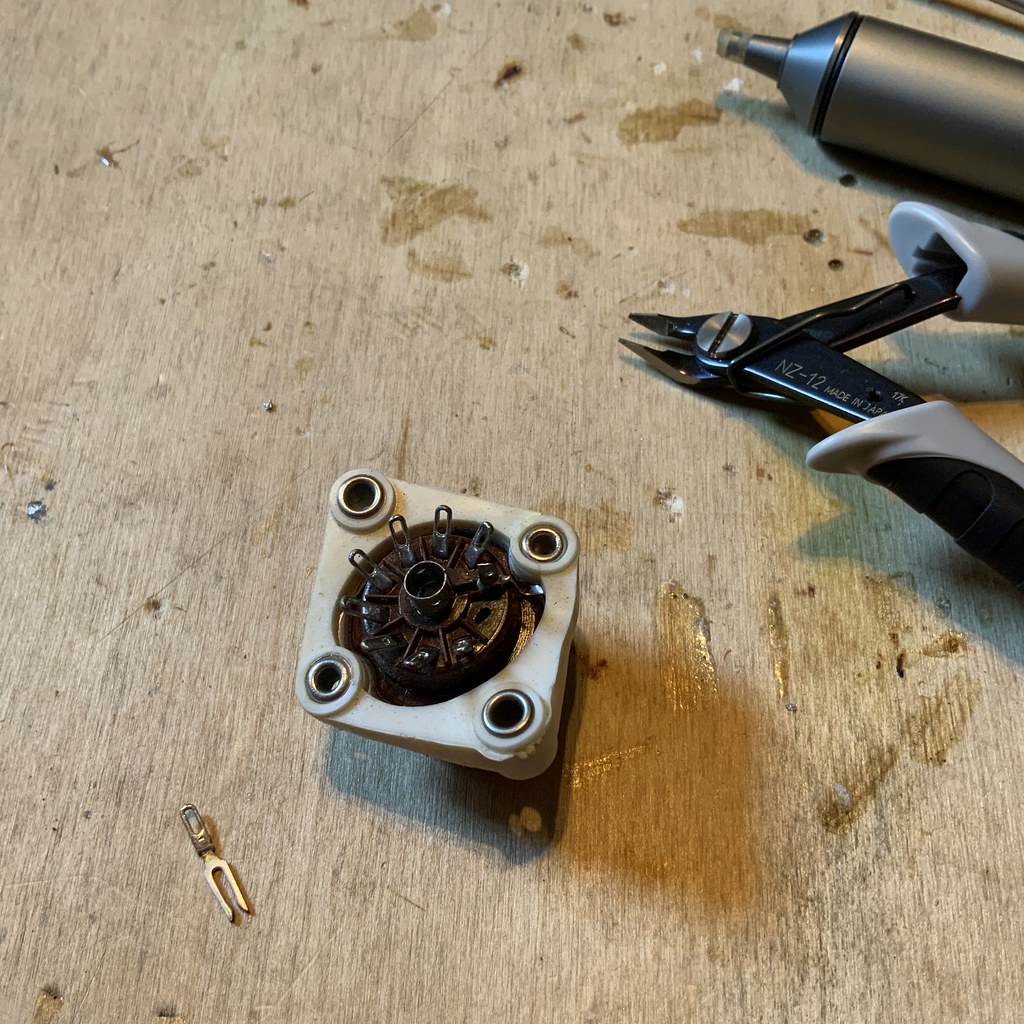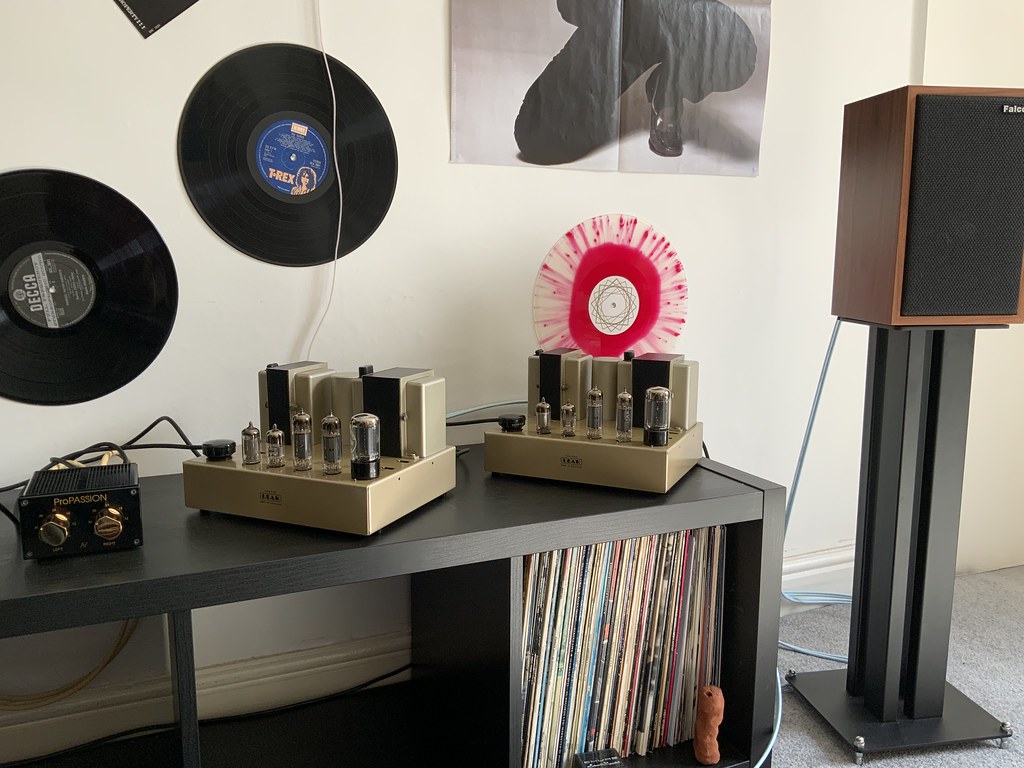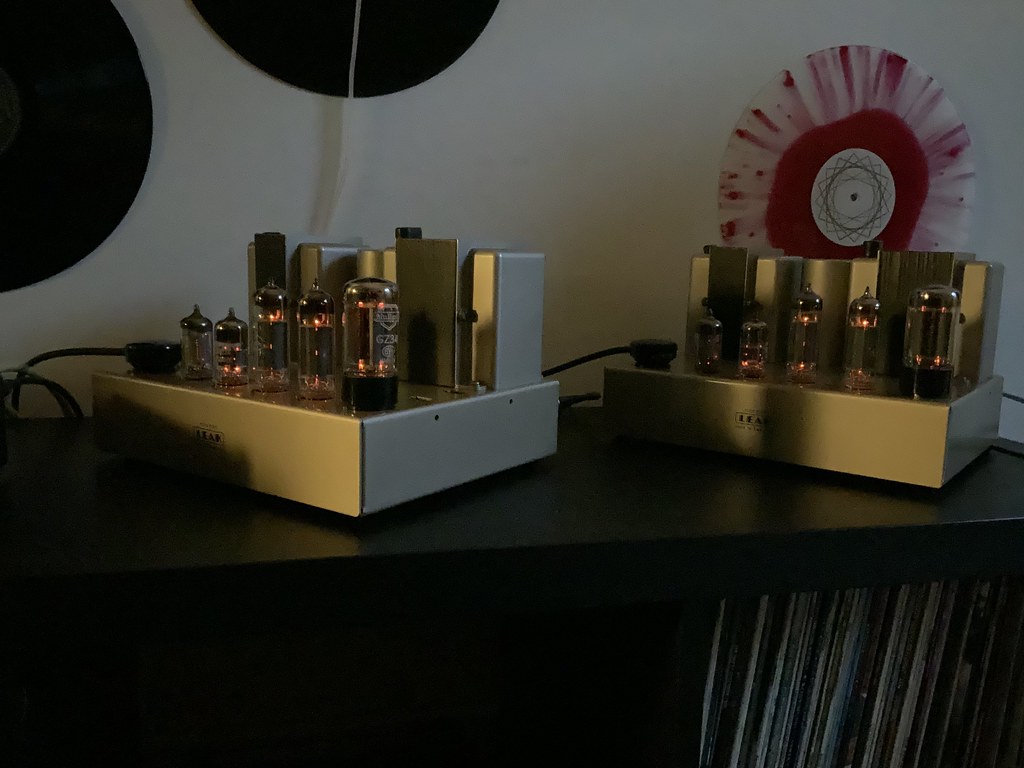Yank
Bulbous Also Tapered
This site contains affiliate links for which pink fish media may be compensated.


How are they sounding? Will be very interesting to hear your thoughts on these vs your Stereo 20 in due course.
Are you going to try them with the Tannoys?
They sound very decent. I wasn’t thinking “these are incredible” or “ugh, these are just terrible”, so I suspect they are pretty much on the level of the Stereo 20. Basically they sound really good. I’ll run them off and on for a week or two before deciding which to keep in the system (likely the S20 as I suspect it will be easier on valves, plus is a bit more practical size wise in the available space). The thing I was very relieved about is they do sound like a pair, I wasn’t thinking one channel was stronger at all. Image very nicely centred with a very accurate Audio Synthesis dual mono stepped attenuator.
It's nice to have the option to change systems around, particularly such mint examples as all your Leaks.
Naturally, we'll all expect some moody and stylish shots of these 'new' Leaks doing their thang taken in low light when you get the chance!

Another one of those audio products that make you question how much real progress has been made in 60+ years!
It might be a personality type thing, maybe an ex-IT manager thing, but I do always like to have two of the things I really like so I’ve still got one if one needs to be fixed or whatever. It is no accident I have two 303s etc (both actually in use at present). As such having two variations on the Stereo 20 theme is fine. I can’t see my moving either ‘my’ S20 or the TL12 Plus on until proper retirement age. I do plan to flip the grey S20 though, but I have someone potentially interested there. It also hopefully means they’ll last a lot longer if I swap them over now and again for a change. Each can keep it’s own distinct tube-set(s), e.g. I’ll keep the fabulous’64 Mullard EL84s in the S20 as I suspect they’ll last longer there.
I understand that mind-set. I’ve done this in the past though it can get pricey and I haven’t the space currently for two of everything (or at least the items I’d want ‘backed up’).
Interesting what you say about how the Leaks run their valves. I guess what one can take from their designs is that thousands are still running with the same set of valves.
... What I’m trying to do here, though annoyingly don’t have anything even remotely approaching the necessary levels of education, is to try and understand, even in very broad brushstrokes, the thought process and practical effect of Leak’s resistor, capacitor and transformer (output and mains) changes during the life of both their EL84 amps. I get the impression there was a failure mode on the early amps that could lead to a ‘runaway’ situation where something started leaking, the leak caused more heat/current draw, which in turn increased the voltage leak or whatever. This seems to have dramatically escalated the demise of part-worn valves. I get the impression that the 470K and 0.1uF changes fix this and prevent the runaway, but I’d still like to better understand it and document more of the whole context on this thread.
I suspect a substantial part of it was for marketing reasons as the TL12 Plus needed to be a 12 Watt amp with 0.1% distortion as it was the intended replacement for the earlier and far more expensive TL12.1. As such they likely tried to get a good clean 12 Watts out of what is really a 10 Watt amp (the Stereo 20 only ever ever aimed for 10 a side). I guess with the resistor and cap modifications I’ve pulled my TL12 Plus down to 10 Watts, but I still don’t understand the significance of the output transformer change at all. Was that an attempt to get the full 12 Watts output back after the safety mod? By saying that the Stereo 20 went through the same changes but never had the requirement of delivering 12 Watts, so really I have no idea here!
... I suspect a substantial part of it was for marketing reasons as the TL12 Plus needed to be a 12 Watt amp with 0.1% distortion as it was the intended replacement for the earlier and far more expensive TL12.1. As such they likely tried to get a good clean 12 Watts out of what is really a 10 Watt amp (the Stereo 20 only ever ever aimed for 10 a side). I guess with the resistor and cap modifications I’ve pulled my TL12 Plus down to 10 Watts, but I still don’t understand the significance of the output transformer change at all. Was that an attempt to get the full 12 Watts output back after the safety mod? By saying that the Stereo 20 went through the same changes but never had the requirement of delivering 12 Watts, so really I have no idea here!
